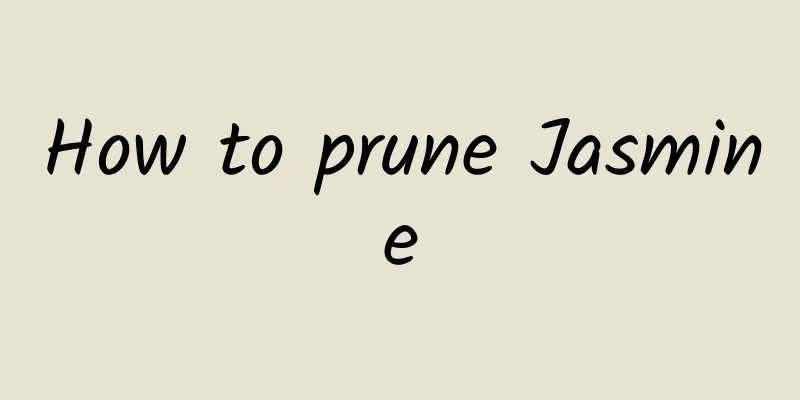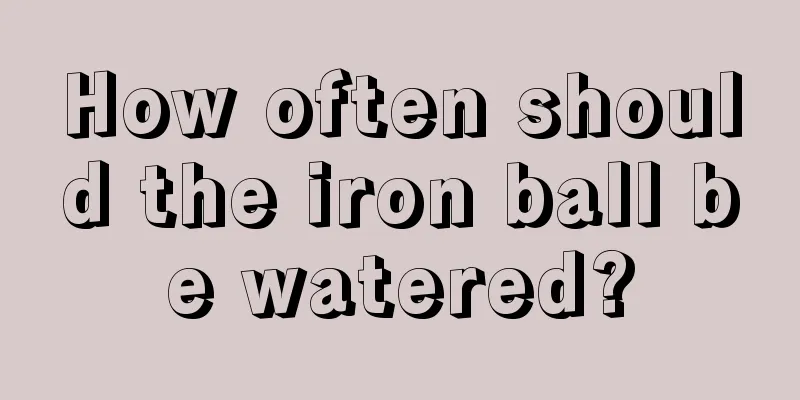The best time to prune plum trees (what is the best way to prune plum trees in winter)

|
Scientific and reasonable pruning of plum trees can shape the tree, regulate the tree vigor, and coordinate the relationship between branch groups. Such pruning can ensure sufficient nutrient supply to each branch and ensure high yield of fruit trees year after year . In addition, whether the plum tree pruning method is in place also directly determines the quantity and quality of the fruit in the second year . However, due to different growth characteristics at different times, the pruning methods are also different. How to prune plum treesLike other fruit trees, plum trees need to be shaped through pruning when they are young . Natural open heart shape and double-layer scattered open heart shape are the two most commonly used shaping and pruning methods for plum trees. Both shaping and pruning methods have the advantages of simple shaping, convenient management, fast formation, early fruiting, high fruiting rate, long life, and good ventilation and light environment. Usually, after 3-4 years of continuous pruning, young plum trees can basically form a reasonable tree structure. Best time to prune plum treesPlum trees can be pruned in spring, summer, and autumn, but spring pruning is generally not recommended. Instead, the focus should be on summer pruning and winter pruning , with summer pruning being the main approach and winter pruning being the auxiliary approach. When pruning, it is generally done on a sunny morning, after the dew on the fruit trees has dried up. This can reduce the risk of sap flow and infection from pests and diseases at the pruning site. Plum tree pruning principles① Mainly short fruit branches and bouquet-shaped short fruit branches Because plum trees mainly bear fruit on short fruit branches and bouquet-shaped short fruit branches, the fundamental principles for pruning should be light pruning and long release as well as optimizing ventilation and light transmission. Focus on pruning the dense branches, competing branches, and vigorous branches on the back of the fruit trees, and combine them with methods such as pinching the top of the fruit trees, taking branches, and twisting the branches. This will enhance the ventilation and light transmission environment of the fruit trees and promote better differentiation and formation of flower buds. ② Determine the degree of pruning according to the growth stage Generally speaking, young trees and fruit trees in the early stage of fruiting should be shaped and their yields should be increased . Perennial fruit trees and fruit trees in the peak period of fruiting should be treated by easing tree vigor, reducing ineffective nutrient consumption, and ensuring high yields. For fruit trees after the peak fruiting period and in the aging period, we should combine pruning methods such as thinning, pinching, and pulling branches . Generally, we should focus on pinching and rejuvenation, accelerating the replacement of old and new branches, and cultivating new backbone branches and fruiting branches. Through such pruning, the plum trees are encouraged to recover their vigor, grow new branches as soon as possible, and resume their normal fruit-bearing ability as soon as possible, thereby achieving the goal of extending the fruit-bearing period and increasing the yield. How to prune a plum tree ① Thinning Thinning generally involves removing the overly dense branches and branches with inappropriate angles from the base of the fruit tree . This can reduce the obstruction of ventilation and light transmission of the fruit tree by the overgrown branches and leaves, and reduce the consumption of nutrients by ineffective branches. Through thinning, the ventilation and light environment of the plum tree can be greatly improved, allowing the branches that are focused on cultivation and each fruiting branch group to absorb more and more sufficient nutrients. Such pruning not only makes the fruit grow bigger and develop more evenly, but also increases the later yield and improves the sugar content and taste quality of the fruit. ② Carry out in batches every year When thinning out, it should be done in batches each year. Do not remove too many branches at one time , and do not remove too many perennial large branches at one time. Otherwise, not only will the branches and leaves of the fruit trees be greatly reduced, the amount of nutrients synthesized by photosynthesis will be reduced, causing the fruit trees to be malnourished and weak. Moreover, if the pruning is done all at once, it is easy for the large amount of pruning to cause the sprouting of new shoots and the excessive growth of fruit trees, thereby reducing the yield and quality of the fruit. |
Recommend
What kind of soil does Clivia like?
1. Soil conditions 1. Acidity: First of all, we m...
Potato growing conditions and characteristics
Potato growing conditions Potatoes are a crop tha...
The difference between Deutzia odorata and Rosa rubra
1. Difference in appearance Deutzia odorata is a ...
How to Make Firecracker Plants Bloom at Christmas
The actual flowering period They basically bloom ...
Do flamingos prefer shade or sun?
Do flamingos prefer shade or sun? Flamingos are q...
How to grow succulents to make them more vigorous
1. Plenty of light Light is necessary for the gro...
What vegetables are best to grow in February and March?
During this season, many farmers tend to grow var...
Lotus soilless cultivation method soilless cultivation technology and precautions
Soilless cultivation technology of lotus The effe...
Taboos of growing green radish at home
1. Climbing all over the room It is a shade plant...
How to use ferrous sulfate correctly for home gardening (how to use ferrous sulfate for the best effect)
Ferrous sulfate mainly contains iron, which is us...
Can I plant an osmanthus tree in the yard?
Can I plant an osmanthus tree in the yard? Osmant...
Lettuce cultivation in the open air overwintering in Shandong
Lettuce, also known as celery , prefers a cool cl...
The difference between dragon beard orchid and dragon blood tree
Dracaena Dracaena is also called the bleeding tre...
Environmental conditions and characteristics of bamboo shoot growth
Environmental conditions and requirements for bam...
How to water Phoenix bamboo in spring
How to water Phoenix bamboo in spring Spring is t...









